The Dr. Peter Centre is a small, but mighty organization, known for its innovation in person-centred care. Visiting the HIV/AIDS residence and day centre in downtown Vancouver is like stepping into a living room instead of a clinical care facility. There are no white coats to be seen. It’s a welcoming place where clients can stop by to talk to someone, have a hot meal and get support if they’re having a bad day.
While technology isn’t the centre’s primary concern – only about 10% of staff work at desktop computers – it’s certainly a part of the critical infrastructure that supports their frontline operations. By 2021, their legacy tools were starting to show their age. Usage of their previous intranet, now years out of date, was declining. As a result, frontline teams were missing out on important communications. In some cases, critical messages had to be sent out by text to ensure employees were up to date.
Though it was clearly time for an update, the team, which included Project Lead Mark Landau, Project Management Specialist Lee-Ann Robertson and Development Manager John Tietz, were wary of initiating a complex technology project. They wanted a right-sized intranet designed to meet their organization’s unique needs.
As Lee-Ann explains, “It’s so easy to implement everything, but if it’s not what people need, it’s just more noise for them to filter out. The right intranet for us is one that supports our employees in their jobs, connects them to our purpose and culture, and evolves with us as an organization.”
Understanding employee needs
The Dr. Peter Centre employees approximately 145 people in full and part-time roles than span clinical services; knowledge, translation and evaluation; communications; fundraising; food services; facilities and executive divisions. “We have a mixed blend of users. Each one of these folks needs something different from the system,” says Mark, who manages and updates the system.
To understand what functionality would best support the Centre’s operations, Habanero consultants and the Dr. Peter Centre team conducted research and testing with employees representing a range of experiences using the intranet – from casual to heavy users. They discovered that a lot of people weren’t using the old intranet, partly because it couldn’t be used on a mobile device. The site also lacked prominent access to the information and tools they needed to access most often, like maintenance logs. Other key resources, such as employee benefits forms and training information, were there but hard to find.
Usability testing, in particular, provided the team with the feedback they needed to improve the user experience. “Asking people what they want is an unfair question if they don’t understand the capabilities of the tools,” explains Lee-Ann. “Once they saw it in action, we could dig into what features would meet us not just where we are, but where we're headed as an organization.”
Choosing GO Intranet
The Centre’s previous intranet was built on an older version of SharePoint that is no longer supported by Microsoft. They liked SharePoint’s integration within their digital workplace, especially Microsoft Teams, but wanted something modern that would be easy to manage and could serve their employees well into the future.
As a lean organization, the Dr. Peter Centre lacks in-house IT support, so out-of-the-box functionality and technical support were essential. “We didn't want to have to create an intranet from scratch,” says Lee-Ann. “GO was a super easy tool for us.”
As a modern SharePoint intranet, GO is flexible, mobile friendly and easy to use. It uses Microsoft’s fluent design system, which means it will always look at home within the Microsoft 365 workplace even as it evolves and grows over time.
They were also looking for a technology partner to guide them through the process. Pairing with Habanero seemed like a natural fit. “Habanero has a very similar culture to ours,” says John. “Our teams connected on a very personal level right away, and we felt comfortable giving each other feedback.”
“We appreciated the skills that Habanero brought to this project,” he continues. “They have a tactical approach, and they do these types of projects every day, which certainly made things much easier for us.”
Features
Employees, especially frontline staff, often don’t have time to browse and explore information in depth to find the information they need. The research helped the team hone in on the features that would most positively impact employee experience.
Sharing stories
It’s always been important for the employees at the Centre to share meaningful stories that celebrate the work they do. Their previous intranet didn’t have functionality to support rich storytelling. With The Point, Mark can add photos to news stories that capture employees’ interests and create a sense of connection across the organization.
A photo gallery on the home page allows employees to add their own pictures of what’s happening in their department or program. It’s one of GO Intranet’s most popular features. Photos open in a lightbox view and have integrated social features. “We wanted people to not just go in and get information but interact with the site on different levels,” says John. “People can add photos, comment on stories or like posts. These are social features that we’re all really familiar with by now, so it lowers the barrier for participation.”
Connecting to purpose
The Dr. Peter Centre has a strong history and sense of purpose. They wanted to ensure that all employees – especially those just joining the organization – could learn about the Centre’s origins and achievements. “We decided to create a section about our organization that talks about services and initiatives,” says John, describing a new area of the site. “We didn’t have this before. It’s pretty cool because we’re seeing how it fosters a sense of connection and pride in the work we do. People have a chance to recognize the great work that they’re doing when it’s reflected back to them.” The section not only reflects the Centre’s culture and history but also increases employees’ shared understanding of the organization’s purpose, values and mission.
Learning and development
The Centre is known for its innovative approach to whole-person care, so it’s no surprise that staff show a strong interest in continuous learning and knowledge sharing. With The Point, the team wanted to make it easier for employees to discover and engage in learning that is relevant to their interests and goals. The intranet includes a training area where new hires and seasoned staff alike can find resources to support their career development.
“Before we had The Point, people weren’t always aware of what training was available to them, and there was no centralized place where they could find out,” says Lee-Ann. “We wanted to make it more accessible, so people could find relevant learning opportunities without having to rely on their supervisor or someone else in the organization to make a suggestion.”
Supporting daily operations
It takes an impressive amount of coordination and collaboration among staff to keep operations at the Centre running smoothly. Supporting staff’s administrative needs was a key goal for The Point. A centralized maintenance log, accessible from the GO Intranet springboard means employees can easily track and log issues so they’re addressed quickly. This feature is especially useful for housekeeping staff, many of whom use the logs several times during the course of a shift. Before The Point, schedules were managed and communicated manually to staff, sometimes by email or text. Now staff can check their schedules posted on The Point from anywhere – whether they’re working with program clients, at home or from their office.
These simple tools are having a big impact on employee experience. “It has been great to see people, like our housekeeping staff who have limited experience with our computer systems, gain more comfort and confidence with The Point,” says John. “We’re seeing usage go up as they use it help them in their work.”
Data-driven improvements
The Point also gives the team the ability to understand how employees are engaging with the intranet, so they can make changes that respond to their needs. “With our old intranet, we couldn't see how many people were using it, how often and what areas they engaged with most,” says Lee-Ann. “We were lacking the level of detail we needed to make improvements.” GO Intranet’s analytics provide robust insight into user behaviour that empowers teams to make an actionable measurement plan. As the site grows, the team can add custom dimensions to capture even more meaningful data.
Ready to launch
Launching the new intranet was an opportunity to engage with everyone across the organization to familiarize them with the new system. “We created specific, easy-to-access training one-pagers and short videos to encourage usability,” says John. “It was a chance to get together with different groups. We were able to show off the bells and whistles of the new intranet, but also set new norms and expectations around how we can communicate and stay connected more effectively.”
After each training session, employees completed a short quiz that involved finding key information on the intranet. The exercise helped employees feel more engaged in the intranet launch while the quiz results provided the team with further insight into the site’s usability. “It gave folks who felt unsure about using the system more confidence,” recalls John. “They recognized that they could navigate the intranet to find what they needed. It was also a low-pressure, fun activity. At the end, we had a raffle and gave out prizes to participants.”
Building on success
The Point is now an important part of employees’ day at the Dr. Peter Centre. “Two years ago, we didn't use Microsoft Teams. We talked to each other and shared files by email,” recalls John. “Now we start each day on The Point.” Frontline staff without regular computer access can now visit the site from a mobile device, so it’s easy to check their schedule or log and track important tasks.
The Point is also serving to connect people across the Centre’s different divisions. A few months after the launch, staff got together in Stanley Park for a daylong cultural training session with local Indigenous leaders. To capture and share the enriching experience across the organization, the team published a story and shared photos on The Point, which has helped foster an enduring sense of connection to the experience and each other.
Engagement has been increasing since the launch. Integrating digital tools to support the Centre’s frontline, people-centered operations is an ongoing process. John acknowledges that it takes time: “The Point is a big leap forward for us. We had a Honda Civic and now we've got a Ferrari! We're still learning how important it is.”


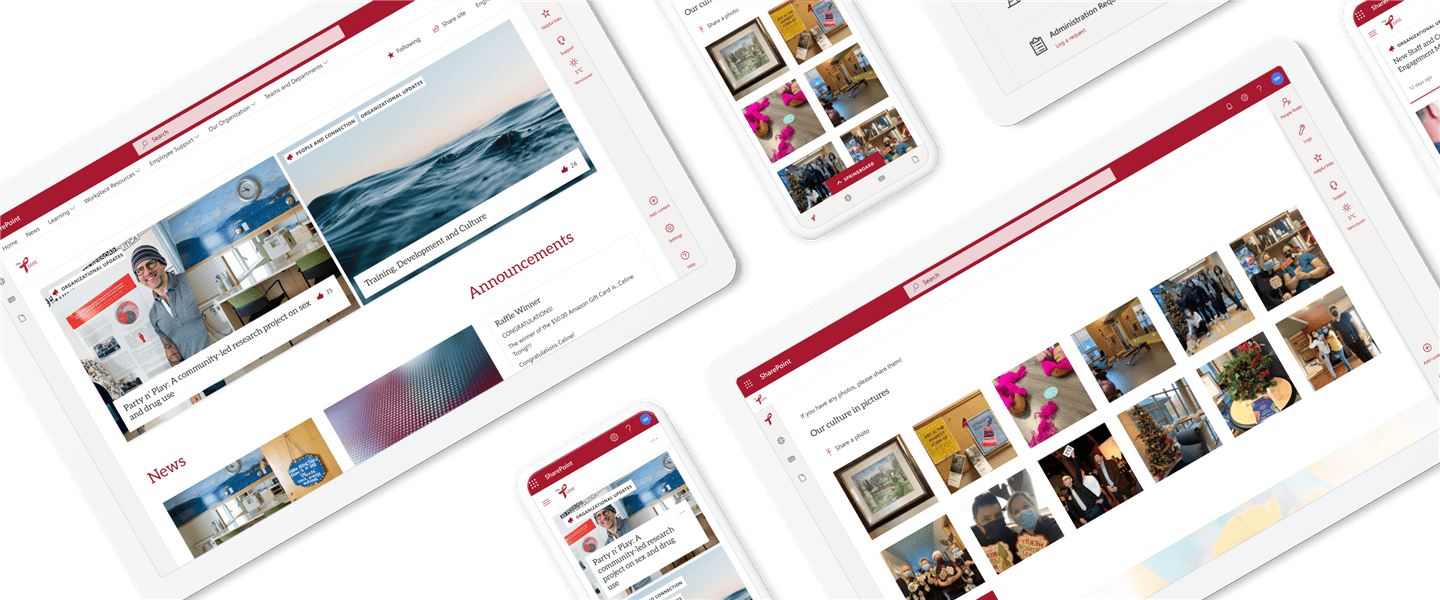



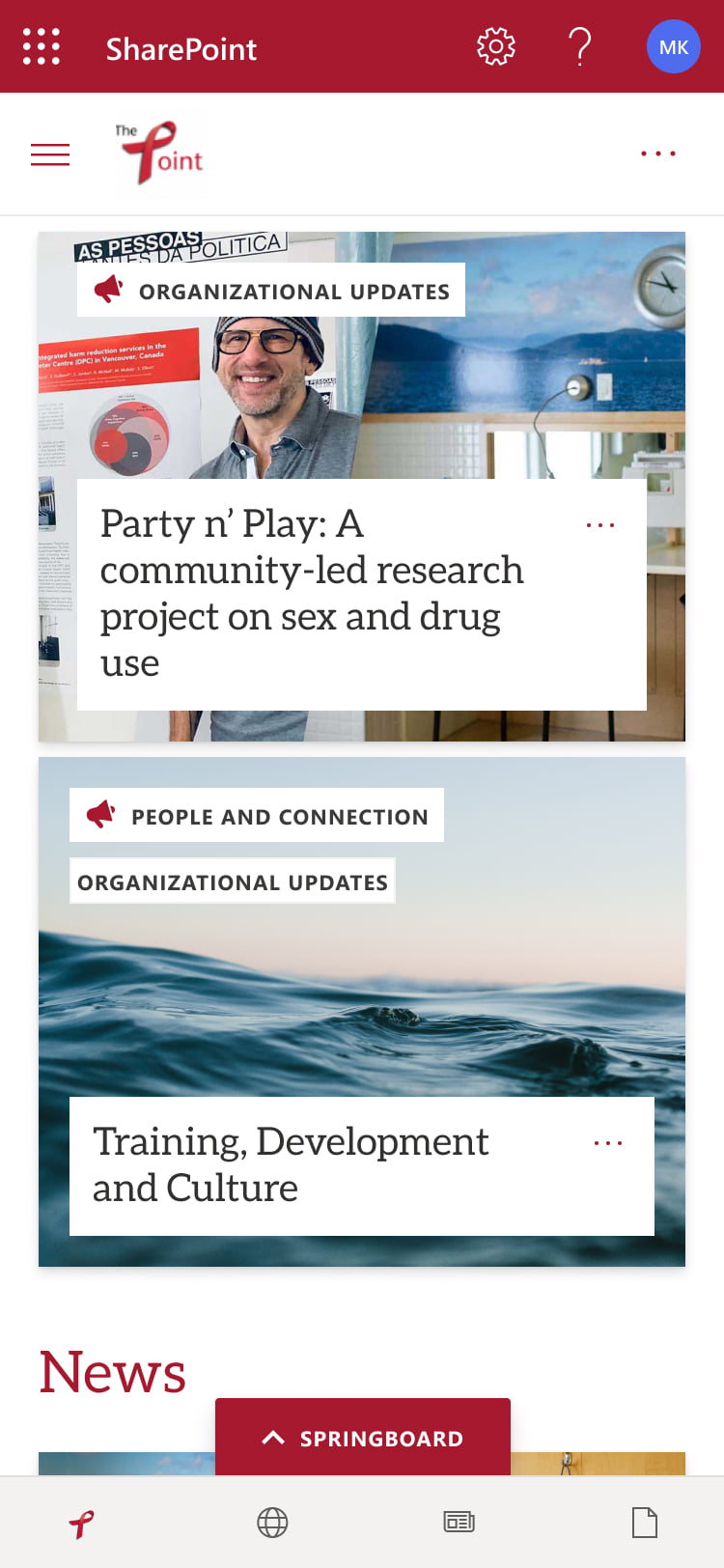
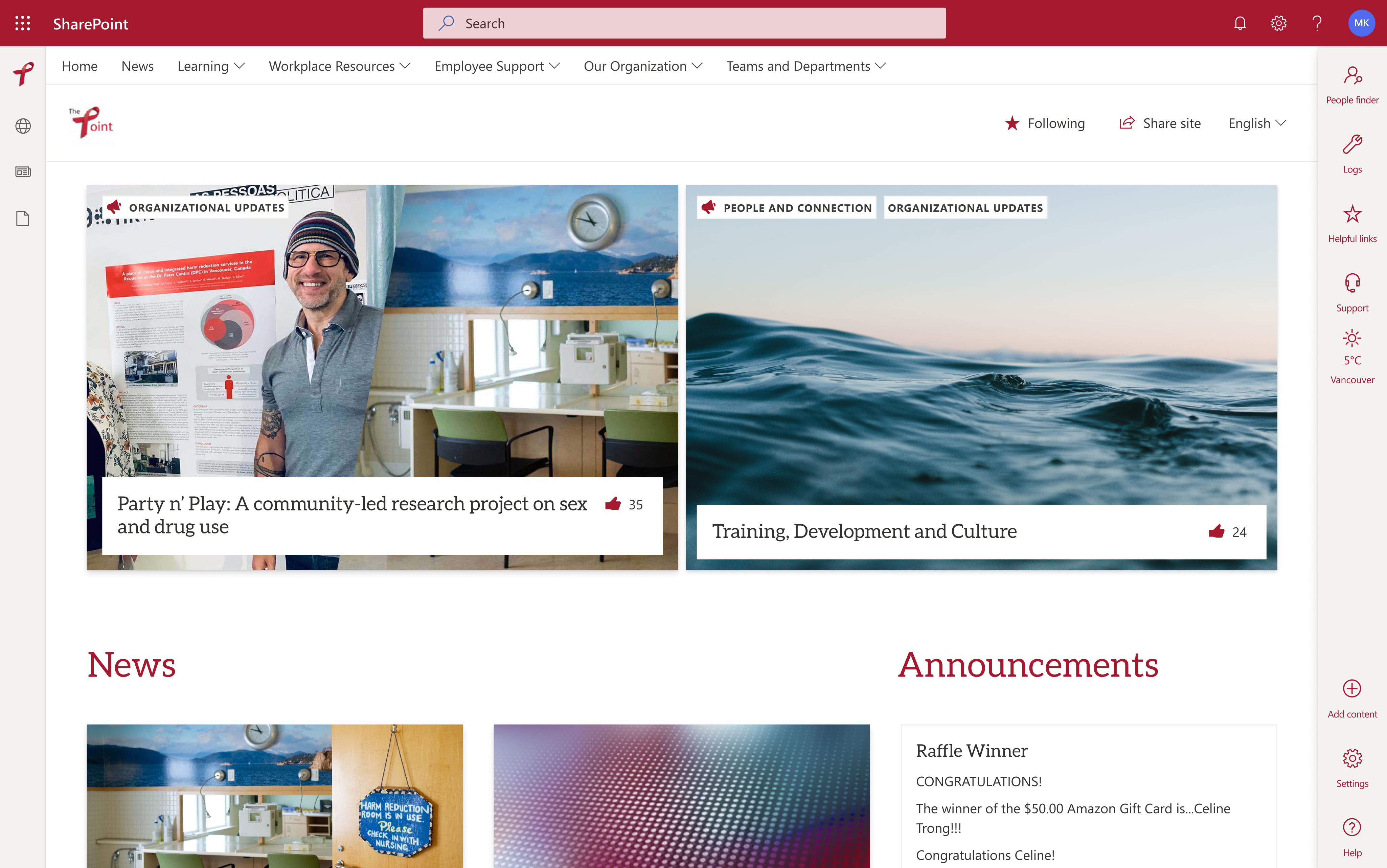
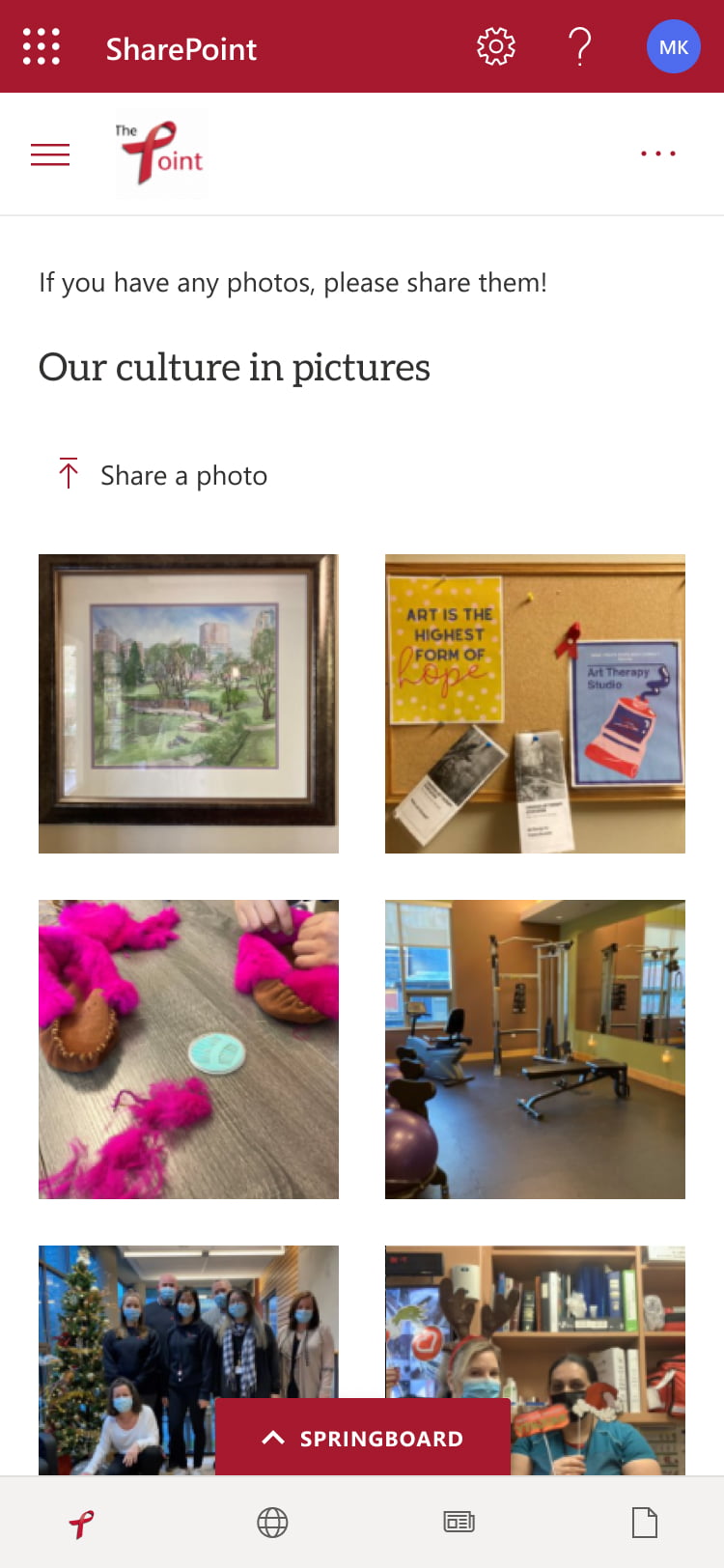
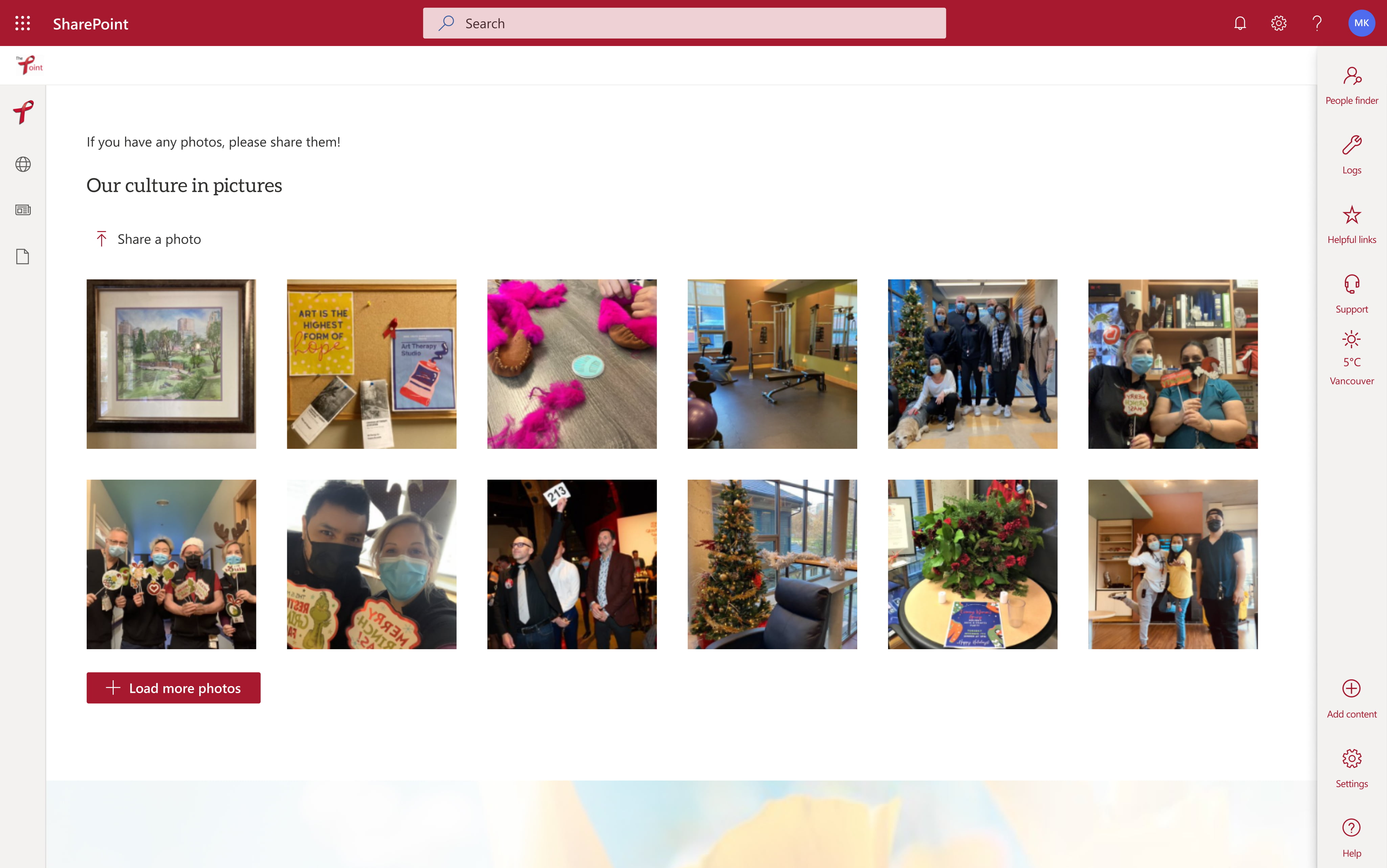





.jpeg?bc=white&la=en&mw=416&modified=20251202191043&hash=E64AA9DFFAE8D1AC27890831F714D5B0FA2FEBB2)

